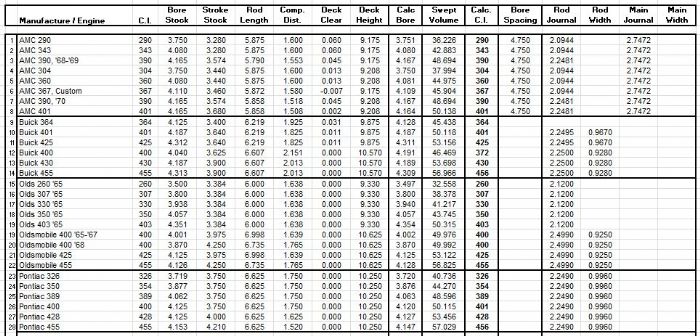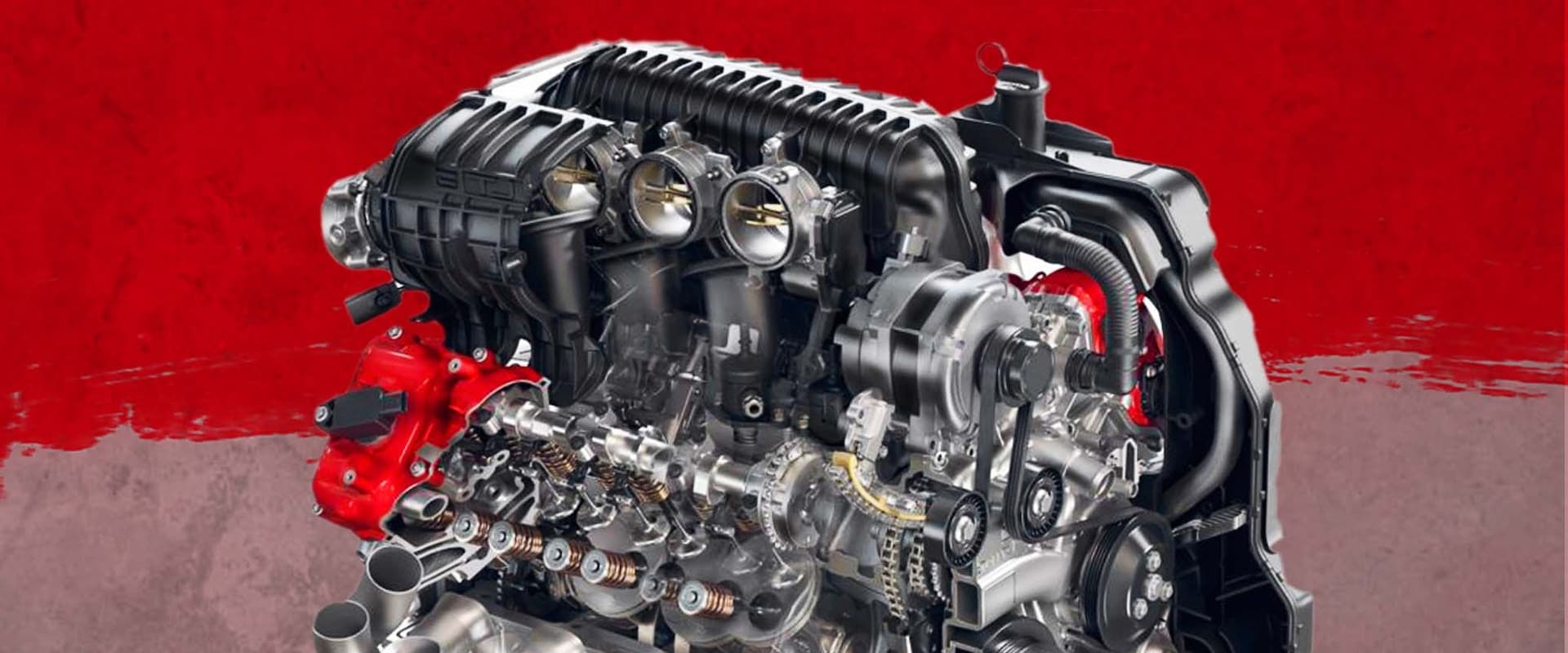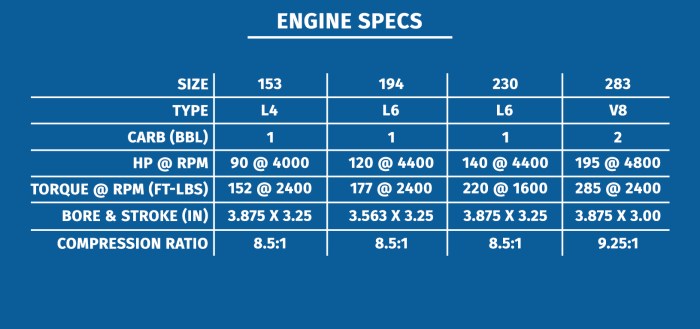Engine specs comparison takes center stage as we delve into the intricate world of automotive engineering. Understanding engine specifications is crucial for evaluating vehicle performance, efficiency, and overall driving experience. From horsepower and torque to displacement, these metrics play an essential role in how a vehicle operates and meets consumer needs. This exploration will not only clarify what engine specs entail but also highlight their significance in the broader context of automotive innovation.
Investigate the pros of accepting Affordable Mazda performance cars in your business strategies.
Introduction to Engine Specifications: Engine Specs Comparison
Engine specifications encompass a broad range of parameters that define the performance, efficiency, and characteristics of an automobile’s engine. These specifications are vital as they directly influence vehicle performance, including acceleration, fuel economy, and overall driving experience. Understanding engine specifications allows consumers and enthusiasts alike to make informed decisions about their vehicles and modifications. Key components of engine specifications include horsepower, torque, engine displacement, and fuel type, among others, each contributing to the engine’s functionality and efficiency.
Types of Engine Specifications
Different types of engine specifications play a crucial role in evaluating engine performance. Key specifications include:
- Horsepower: This measures the engine’s power output, indicating how much work the engine can perform in a given time.
- Torque: Torque measures the rotational force produced by the engine. It is essential for acceleration and towing capabilities.
- Displacement: Engine displacement refers to the total volume of all the cylinders in the engine, affecting power and efficiency.
The significance of these specifications can be observed when comparing different engine types, such as V6 and V8 engines, as well as electric motors. For instance, a V8 engine typically produces more horsepower but may have lower fuel efficiency compared to a turbocharged four-cylinder engine.
Comparative Analysis of Engine Specs Across Brands

The specification comparison across popular automotive brands illustrates the diversity in performance capabilities. Below is a comparison table of engine specifications for Ford and Chevrolet.
| Brand | Horsepower | Torque (lb-ft) | Fuel Efficiency (MPG) |
|---|---|---|---|
| Ford | 450 | 510 | 20 |
| Chevrolet | 455 | 460 | 22 |
Brand reputation significantly influences consumer choices as well. For example, Ford’s focus on performance-oriented engines has established it as a leader in muscle cars, while Chevrolet’s emphasis on fuel efficiency attracts a different segment of buyers.
Performance Metrics in Engine Specs Comparison
Performance metrics provide a deeper insight into how engine specifications affect real-world driving experiences. Key metrics include:
- 0-60 mph time: This metric gauges how quickly a vehicle accelerates from a complete stop to 60 mph, closely relating to horsepower and torque levels.
- Quarter-mile time: Another critical performance metric that measures the time taken to complete a quarter-mile stretch, influenced directly by engine output.
- Top speed: This reflects the maximum speed a vehicle can achieve, often dictated by horsepower and aerodynamics.
Understanding these metrics is essential for consumers who prioritize performance or efficiency when selecting a vehicle.
Engine Specifications for Electric Vehicles, Engine specs comparison

Engine specifications for electric vehicles (EVs) differ significantly from traditional combustion engines. Unlike conventional engines that measure horsepower and torque, EVs focus on metrics such as kilowatts and battery capacity. Notable electric vehicle models include:
- Tesla Model S: 1020 horsepower, 1050 lb-ft torque, range of up to 405 miles.
- Ford Mustang Mach-E: 480 horsepower, 634 lb-ft torque, range of up to 300 miles.
The trend towards electric powertrains is shifting engine specifications, compelling manufacturers to innovate in battery technology and energy efficiency, which in turn influences consumer preferences.
The Role of Engine Specifications in Tuning and Modifications
Engine specifications are critical for guiding tuning and aftermarket modifications. Common modifications that enhance performance include:
- Upgraded exhaust systems: Improves airflow and can increase horsepower.
- ECU tuning: Adjusts engine parameters for better performance and efficiency.
- Forced induction systems: Such as turbochargers or superchargers, significantly boost horsepower and torque.
While modifications can improve engine specs, they may also impact reliability and warranty terms. Careful consideration is essential when modifying a vehicle.
Future Trends in Engine Specifications

Emerging trends in engine specifications include hybrid technology and the integration of alternative fuels. As manufacturers focus on sustainability, vehicles are increasingly equipped with hybrid engines that combine traditional combustion engines with electric powertrains. Predictions suggest that engine specifications will evolve to prioritize efficiency and lower emissions, influenced by stricter regulatory changes.
For example, the upcoming regulations may require manufacturers to reduce average fleet emissions, prompting the development of more efficient engines and alternative fuel technologies.
Real-World Application of Engine Specs
Case studies reveal the practical implications of engine specifications on driving experiences. For instance:
- Performance-oriented vehicles like the Ford Mustang provide thrilling acceleration and handling, appealing to driving enthusiasts.
- Economical models like the Toyota Prius focus on fuel efficiency, attracting environmentally conscious consumers.
These examples highlight how engine specs influence vehicle choice across different consumer segments, enabling buyers to align their choices with personal preferences and lifestyle needs.
Final Thoughts
In conclusion, the discussion around engine specs comparison reveals the dynamic interplay between performance metrics, brand reputation, and evolving automotive technologies. As we look towards the future, it is evident that engine specifications will continue to adapt, influenced by trends in hybrid technology and consumer preferences. By understanding these specifications, drivers can make informed choices that align with their performance expectations and lifestyle needs.
Examine how Ford Mustang Dark Horse can boost performance in your area.